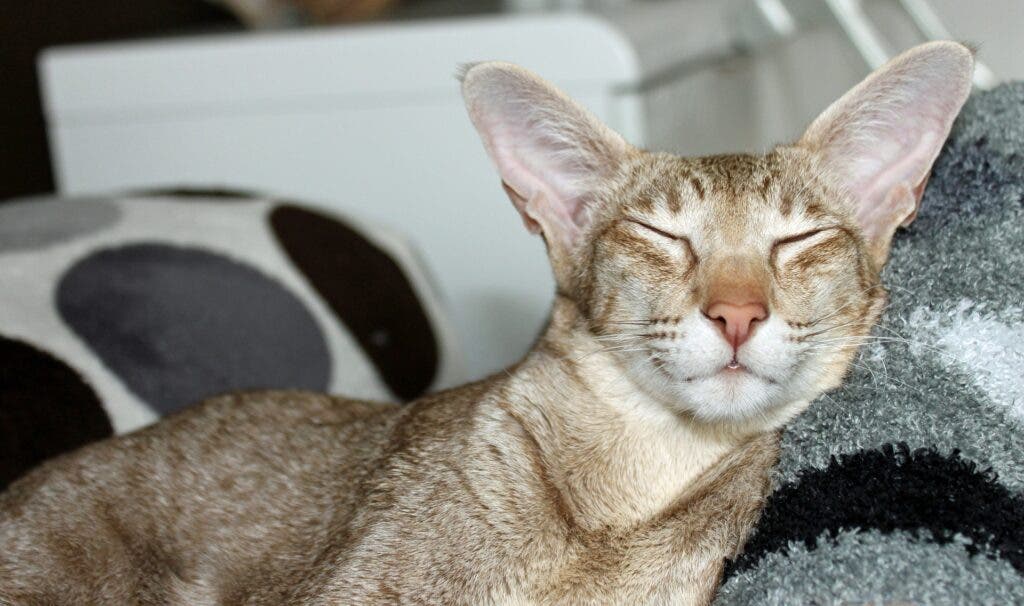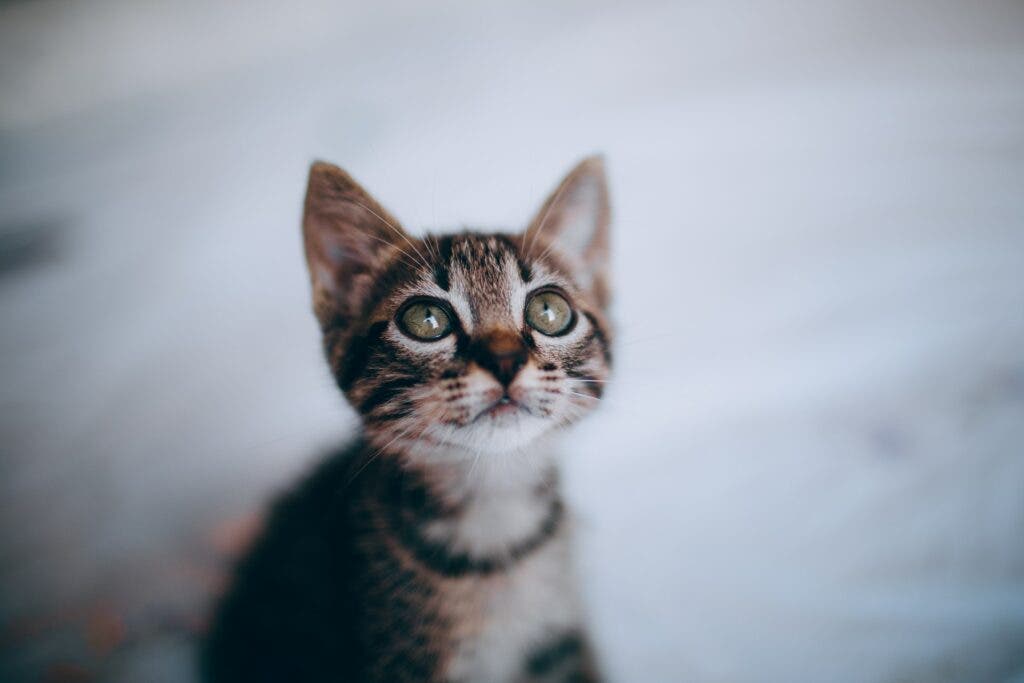A cat named Merlin purrs so loudly that her owner can hear her purr even while using a loud hairdryer. Merlin also holds the Guinness World Record for the loudest purr (reaching 67.8 decibels) made by a pet cat. Most cats don’t purr nearly as loudly as Merlin, but their purr is just as fascinating.

Cats are believed to purr when they are happy but this is also not entirely true — cats can convey many other things by purring and they can purr in a number of situations.
According to research, a cat purr can also be be linked to stress, hunger, pleasure, fear, pain, comfort, and even bone regeneration. Surprisingly, large wild cats like tigers, panthers, and lions can not purr. So just like meowing or hissing, purring is also considered an integral and unique part of a cat’s behavior.
What is purring and why do cats purr?
Purring is a low-frequency (ranging between 25 to 150 Hertz) fluttering sound (or vibration) made by a few mammal species (such as cougars, cats, snow leopards, and cheetahs) belonging to the Felidae family. Previously, it was believed that purring was the sound of blood flowing through a cat’s thorax but then other studies suggested that it could be the vibrations inside a cat’s larynx that result from the frequent constriction and dilation of its glottis during breathing (this movement in cats is controlled by brain center called neural oscillator). However, there’s still some degree of uncertainty about all of this and scientists are still unsure why and how cats actually purr.
Various studies concerning cat anatomy confirm that there is no special purring organ inside these lovable furry animals. It’s likely that even cats don’t know how they make that soft rumbling sound. Purring is an involuntary action that is totally under the control of the cats’ central nervous system. So if you were thinking of making your cat purr on command, sorry it’s never going to happen. Cats only purr when they want to — just like most things they do.
Cat owners usually found their cats purring either when they are being stroked or when they are hungry. This is why most cat owners believe that purring is cats’ way of relaxing or saying that they want something. Some studies also suggest that within a cat’s purr there is a baby-like crying sound that can urge the cat owners to respond to their pets’ needs — something called solicitation purring.
“While the purr does generally represent contentment for cats, it can also express nervousness, fear, and stress. Fortunately, more often it’s an indicator of the former,” says Gary Weitzman, President, San Diego Humane Society.
However, while cats purr most often when they’re relaxed and they enjoy something, this isn’t the only reason why cats purr. At the time of birth, kittens are believed to purr to bond with their mother and let her know about their presence, whereas the mother cat is said to purr to make her kids feel relaxed. Adult cats are found to purr when they are happy and excited and also when they are frightened, injured, or involved in a fight.
The vibrations that occur in a cat’s body due to purring may also play a role in easing breathing, repairing bones, healing wounds, and strengthening muscles. Interestingly, these vibrations have frequencies similar to the ones that are used in the therapeutic treatment of osteoporosis. This could also be one of the reasons why cats experience fewer bone-related issues (such as osteoarthritis) compared to dogs.
Less known facts about cats and their purr

There’s still much we’ve yet to learn about the surprisingly complex behavior of purring — but that doesn’t mean we don’t know much about it. Quite the opposite: research has found out a number of intriguing facts about purring.
- Cat purring is believed to be helpful against depression and high blood sugar levels in humans. A study also suggests that as compared to others, cat owners have lower chances of developing serious cardiovascular ailments. Moreover, pet cats (also dogs) can also prove to be helpful to owners who go through psychological treatment, they act as supportive companions for patients who suffer from social isolation, cognitive impairment, and other behavioral disorders.
- If you want to form a strong bond with your cat the next time you hold her, you should try narrowing your eyes at the catw. This phenomenon is called cat smile, and research indicates that this is probably the best way to communicate with a cat. Many cat owners may have already experienced that when they slowly narrow or close their eyes in front of their cat, the cats also do that. However, the best part is you don’t need to own a cat to try this technique because “cat smile” works even on street cats.
- In ancient Egypt, after the death of a pet cat, all his human family members used to shave off their eyebrows. For dog owners, the rituals were more strict as when a dog died, the dog owner and his family had to remove all the hairs present on their body and head.
- Apart from discovering gravity and inventing calculus, Sir Isaac Newton is also remembered by cat lovers for creating cat doors. While Newton was working at the University of Cambridge, a cat and her kittens often visited his office but sometimes when they found the door closed, they started scratching it — a familiar experience for many cat lovers. The scratching noise made by the cats often disturbed Newton so in order to solve the problem, he ordered the university carpenter to make two holes in his office door so that the cat and her kids could easily enter the office without making any noise.
- Cats are also found to purr when another cat whom they know is injured, some researchers believe that by doing so a cat tries to relax the other cat. This behavior is referred to as purr therapy and it is also believed to be beneficial for healing damaged soft tissues, tendons, and swollen body parts in humans.
Though most of the reasons given behind a cat’s purr and its impact on humans are yet to be scientifically proven, one thing that’s sure is that purring is a very important part of a pet cat’s life. Not only does it enable cats to communicate with other cats and humans, but this is also among the few special actions by which a cat owner can at least guess if his feline friend is happy or not.






